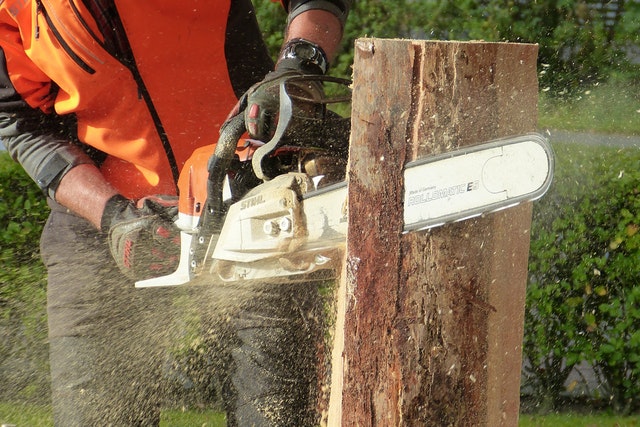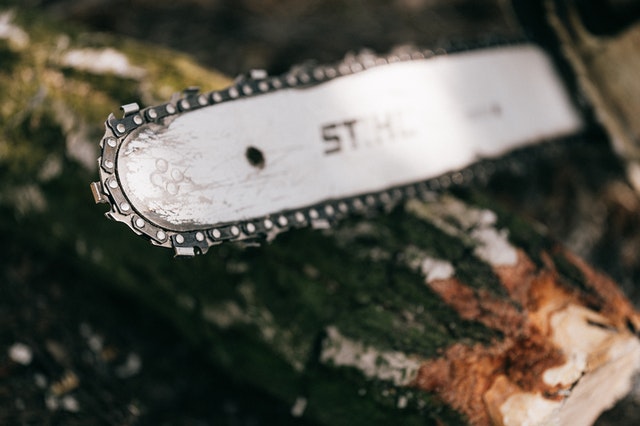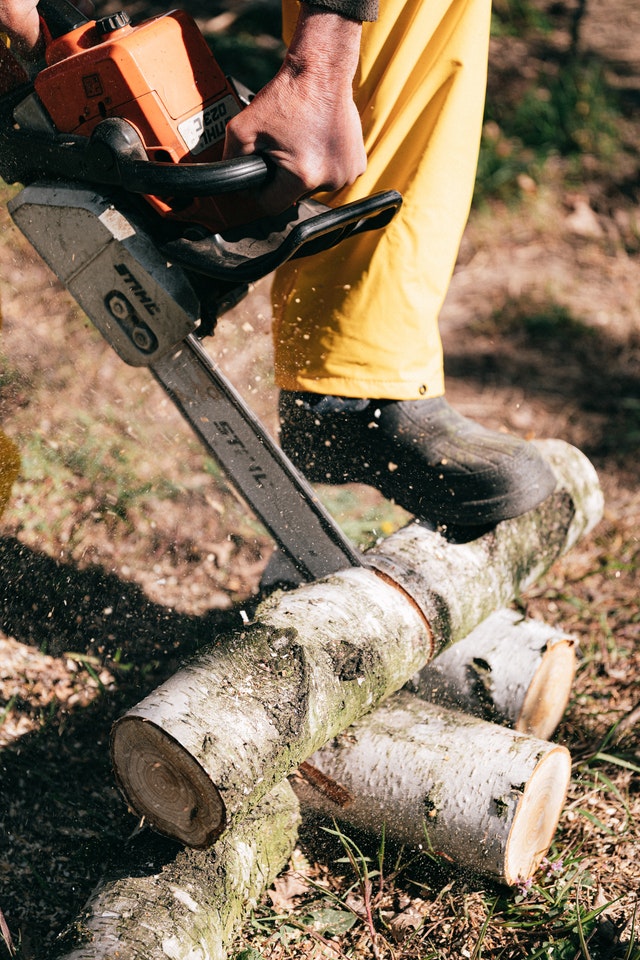The top of the depth gauge must be lower than the leading (cutting) edge. If it is not, the cutter will not be able to take a bite. But if the depth gauge is too low in relation to the leading edge, the rocking motion will become very rough and will force the cutter to take an over-sized bite. The cutter can grab the wood and the engine might stall or the chain might break. It can also lead to severe pull-in, pull-back, and kickback. It is important that as you sharpen the leading edge and the top plate you also lower the depth gauge in the same proportion. (For more about sharpening).
Guide Bar
The guide bar guides the chain so it can do its cutting. Bars are made from one solid piece of hardened steel or constructed of three laminated pieces.
The nose (tip) of the guide bar is the rounded area where the chain reversed direction and returns to the drive sprocket. This tip can be either solid with Stellite (a chromium cobalt alloy) welded on it to reduce wear or it can have a sprocket in it to further reduce bar tip wear. Since touching the tip to the wood can be a major cause of kickback, come manufacturers make make a special covered tip guard.
A slot goes all the way around the bar. The drive links of the chain ride in this slot, and therefore the long, thin sides of the slot are subject to wear. (For more about checking wear in the bar,)
Oil Pump
The rivets and links of the chain and guide bar need constant lubrication and that is the job of the oil pump. (For more about bar and chain oil,) Nearly all saws today have an automatic lubrication pumping system. On older saws and some smaller saws, oiling is manually activated through a push button or bulb you work with your thumb. If this is true of your saw, you should press the button at least once before each cut and check the oil level often.
No matter which system your saw has, the oil is pumped onto the chain and bar through a slot or hole in the guide bar. It is important to periodically remove the sprocket cover and make sure the slot or hole is clean of debris.
Chain Brakes
Any discussion of how a chainsaw works would not be complete without a mention of the brakes. The best chainsaws have two types of brakes: a manual and an inertial brake.
The front hand guard acts as a manual brake with a hair trigger, not unlike a hand pistol. With even slight pressure on the back of the hand guard, a cocked linkage and powerful spring mechanism goes off and clenches a binder strap on the clutchdrum attached to the chain drive sprocket. The chain is seized almost instantly. It all happens in a matter of milliseconds.
The inertial brake that’s built into the front handle/manual brake senses any rotational motion of the saw (such as a kickback) and sets off the cocked linkage that stops the chin automatically. You do not even have to think about doing it yourself. It is like an air bag in a car, just waiting for a chance to prevent an injury (or save a life).





